Home>diy>Architecture & Design>How Does Architect Relate To Design A House
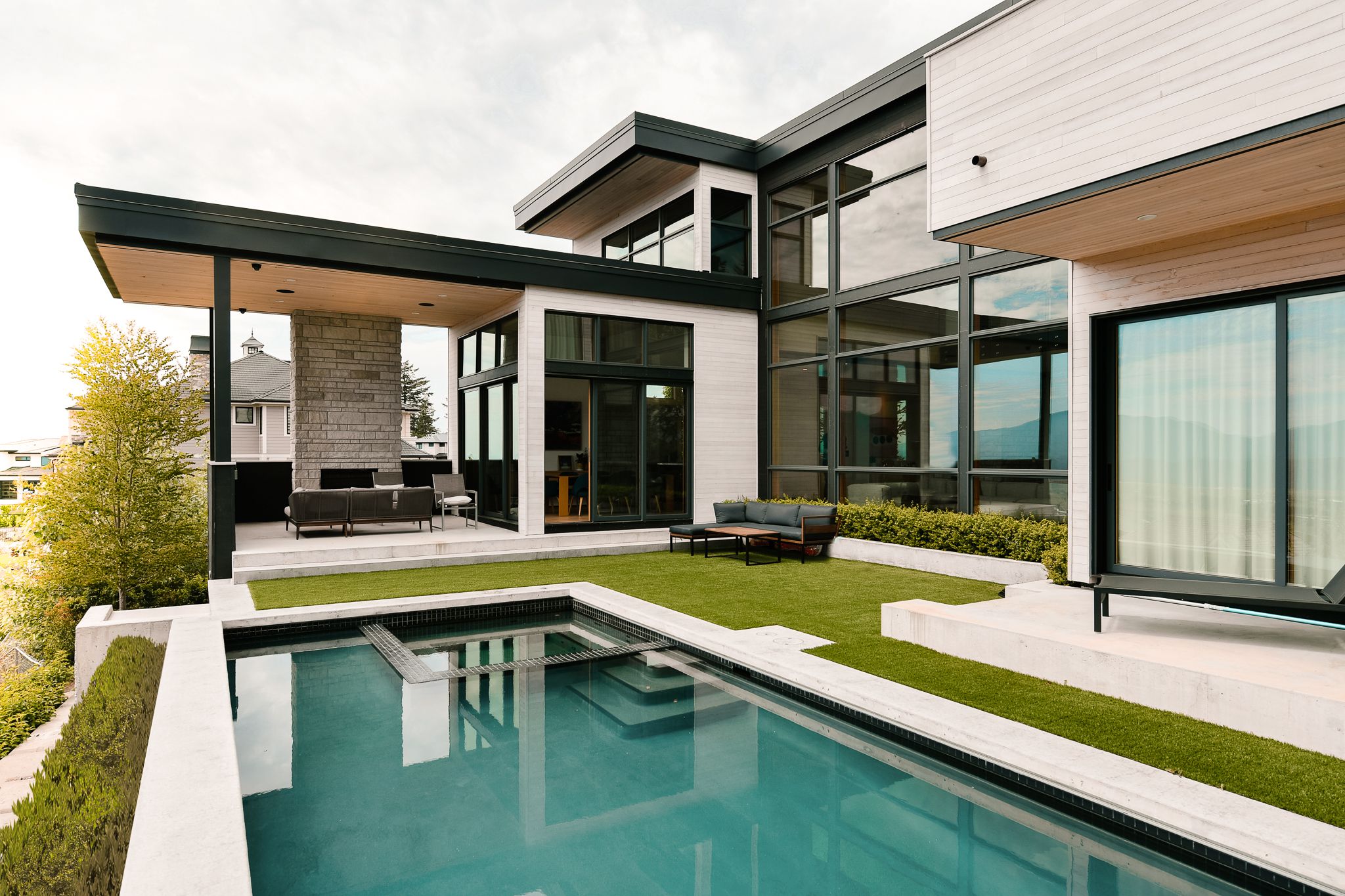

Architecture & Design
How Does Architect Relate To Design A House
Modified: October 20, 2024
Discover how architecture and design intertwine in the process of creating a house. Explore the crucial role of architects and their expertise in transforming innovative ideas into functional and visually stunning homes.
(Many of the links in this article redirect to a specific reviewed product. Your purchase of these products through affiliate links helps to generate commission for Storables.com, at no extra cost. Learn more)
Introduction
In the world of architecture and design, the role of an architect is crucial in creating functional, aesthetically pleasing, and structurally sound houses. The architect is the mastermind behind the design and layout of a house, considering factors such as space utilization, environmental impact, and the specific needs of the client. This article will explore the various aspects of how an architect relates to designing a house, from understanding the client’s requirements to managing the construction process.
Architects are highly skilled professionals with a deep understanding of the principles of design, construction, and spatial organization. They possess a unique ability to transform a client’s vision and transform it into a tangible, livable space. Architects bring a holistic approach to house design, considering not only the aesthetics but also the functionality, environmental impact, and long-term sustainability.
Throughout the house design process, an architect plays a pivotal role in ensuring that the client’s needs and aspirations are translated into a well-designed and efficiently planned space. They are the bridge that connects the client’s desires with the technical requirements of the construction process.
Architects begin by conducting detailed consultations with the client to understand their specific needs, preferences, and lifestyle. This initial stage is crucial as it sets the foundation for the entire design process. The architect collaborates closely with the client to identify the purpose of the house, the number of occupants, and any special requirements, such as accessibility features or specific room functions.
Once the client’s needs are clearly defined, the architect proceeds with a site analysis and evaluation. This involves assessing the land’s topography, orientation, and surrounding environment to determine how the house can best fit into its surroundings. The architect considers factors such as natural lighting, views, privacy, and sustainability to maximize the potential of the site and create a harmonious relationship between the house and its surroundings.
Key Takeaways:
- Architects play a pivotal role in creating functional, aesthetically pleasing, and sustainable homes by understanding client needs, managing construction, and integrating technology for enhanced living experiences.
- From conceptualization to material selection, architects bring expertise and creativity to ensure homes meet safety standards, environmental sustainability, and client aspirations.
Understanding the Role of an Architect in House Design
An architect plays a critical role in house design, bringing expertise and creativity to the table. Their involvement goes beyond simply drawing up plans; they are involved in every stage of the design process, from conceptualization to construction management. Here are some key aspects of an architect’s role in house design:
- Design Conceptualization: Architects are skilled in translating a client’s vision into a tangible design concept. They consider factors such as the site’s characteristics, the client’s lifestyle and preferences, and the local building regulations to create a unique and functional design.
- Space Planning: Architects carefully plan the layout of a house, optimizing the use of available space. They consider the relationships between different rooms, the flow of movement, and the practicality of the design. Architects ensure that each room serves its purpose effectively, and that the overall design is cohesive and efficient.
- Aesthetics and Design Appeal: Alongside functionality, architects place great emphasis on aesthetics. They work with clients to create visually appealing designs that reflect their style and preferences. Architects have a keen eye for detail and are skilled in selecting finishes, materials, and architectural elements that enhance the overall look of the house.
- Technical Knowledge: Architects have a deep understanding of building codes, regulations, and construction techniques. They ensure that the design complies with local regulations and safety standards. Architects also work closely with engineers to ensure structural integrity and address any technical challenges that may arise.
- Sustainability: Architects are conscious of the environmental impact of house design. They integrate sustainable practices and materials into their designs, such as energy-efficient systems, natural lighting, and recycled materials. Architects strive to create houses that are environmentally friendly and minimize their carbon footprint.
An architect’s role extends beyond the design phase. They collaborate with contractors and other professionals during the construction process, ensuring that the design is implemented correctly. Architects conduct site visits to monitor progress and ensure that the construction aligns with the design intent.
Overall, an architect brings a unique blend of creativity, technical expertise, and a deep understanding of the client’s needs to the house design process. They are the driving force behind turning a client’s vision into a well-designed, functional, and aesthetically pleasing space.
Identifying the Needs and Requirements of the Client
One of the initial and crucial steps in the house design process is identifying the needs and requirements of the client. Every client has unique preferences, lifestyles, and visions for their dream home. The architect’s role is to thoroughly understand and translate these needs into a well-designed space. Here are the key aspects involved in identifying the client’s needs:
- Client Consultations: The architect engages in detailed consultations with the client to comprehend their lifestyle, daily routines, and specific requirements. This involves discussing the number of occupants, their ages, any special needs, and desired spatial relationships within the house. Through these discussions, the architect gains valuable insights into designing a home that is functional and tailored to the client’s lifestyle.
- Program Development: After understanding the client’s needs, the architect develops a comprehensive program that outlines the functional requirements of the house. This program considers the number and size of rooms, desired amenities, storage needs, and any additional spaces, such as home offices or entertainment areas. The program serves as a roadmap for the design process and ensures that all client requirements are accounted for.
- Design Preferences and Style: Architects delve into the client’s design preferences and style to create a cohesive design that resonates with their aesthetic vision. This includes discussions on architectural styles, interior design elements, color palettes, and desired materials. By understanding the client’s tastes and preferences, the architect can incorporate them into the design, resulting in a home that reflects the client’s personality.
- Budget and Timeline: The architect works closely with the client to establish a realistic budget and timeline for the project. By understanding the client’s financial constraints and desired completion timeframe, the architect can provide guidance on cost-effective design solutions and help prioritize key areas of the project. This ensures that the final design aligns with the client’s budget and time expectations.
- Sustainability and Energy Efficiency: As environmental consciousness grows, many clients express a desire for sustainable and energy-efficient homes. The architect discusses these aspirations with the client and identifies sustainable design strategies that can be incorporated into the project. This may include passive design techniques, renewable energy systems, efficient insulation, and the use of environmentally friendly materials.
By conducting thorough consultations and dialogue with the client, the architect gains a deep understanding of their needs, preferences, and constraints. This information serves as the foundation for a successful house design that not only meets the client’s requirements but also exceeds their expectations. The architect’s ability to identify and translate the client’s needs into a well-designed space is key to creating a home that truly feels like a personalized haven.
Site Analysis and Evaluation
Site analysis and evaluation are integral steps in the house design process. Architectural design cannot exist in isolation; it must consider the surrounding environment and the specific characteristics of the site. The site analysis and evaluation phase allows the architect to understand the unique opportunities and constraints presented by the site. Here are the key elements involved in site analysis and evaluation:
- Topography: The architect assesses the site’s topography, including the slope, elevation changes, and natural features such as hills, valleys, or water bodies. This information is crucial in determining the foundation design and any grading or leveling requirements.
- Orientations and Views: The architect evaluates the orientation of the site, taking into account factors such as sunlight patterns, prevailing winds, and the desired views from the house. Orienting the house to maximize natural light and capitalize on scenic views can greatly enhance the overall living experience.
- Surrounding Environment: The architect considers the context in which the site is located. This includes analyzing neighboring properties, local vegetation, and any potential impact from nearby structures. Understanding the surrounding environment helps the architect integrate the house seamlessly into its surroundings and maintain a harmonious relationship with the landscape.
- Accessibility and Utilities: The architect assesses the site’s accessibility, including road access, proximity to public transportation, and availability of utility connections. This information is crucial in determining the practicality of the design and ensuring proper connectivity to essential services.
- Zoning and Building Regulations: Architects thoroughly research local zoning and building regulations that apply to the site. This includes setbacks, height restrictions, and any specific design guidelines determined by local authorities. Compliance with these regulations is essential to ensure that the project proceeds smoothly without any legal or administrative hurdles.
- Environmental Considerations: Architects analyze the site’s environmental characteristics, such as prevailing wind patterns, solar exposure, and potential for natural ventilation. These factors inform design decisions related to energy efficiency, passive cooling and heating strategies, and the integration of sustainable design principles.
- Site Constraints: The architect identifies any site constraints that could impact the design, such as the presence of protected trees, water bodies, or steep slopes. These constraints must be taken into account to ensure that the design is both feasible and respectful of the site’s natural features.
By conducting a thorough site analysis and evaluation, architects gain valuable insights into the unique opportunities and challenges presented by the site. This information directly informs the design process, allowing architects to create homes that are tailored to the specific characteristics of the site while fulfilling the client’s needs and desires. A well-executed site analysis ensures that the final design seamlessly integrates the house into its surroundings, creating a harmonious and sustainable living environment.
Conceptual Design and Space Planning
Conceptual design and space planning are integral components of the house design process. These stages are where the architect transforms the client’s needs and aspirations into a tangible design concept. Through careful consideration of functionality, aesthetics, and spatial relationships, architects create spaces that are not only visually appealing but also highly functional and efficient. Here is an overview of the conceptual design and space planning process:
- Design Conceptualization: Using the information gathered from the client consultations and site analysis, architects begin the process of conceptualizing the design. This involves developing a narrative or vision for the house that aligns with the client’s needs and preferences. Architects explore various design concepts, ranging from traditional to modern styles, and consider architectural elements, materials, and finishes that will bring the concept to life.
- Schematic Design: Once the conceptual design is established, architects move on to the schematic design phase. This stage involves the creation of rough sketches and drawings that outline the overall layout and spatial relationships of the house. Architects consider factors such as circulation patterns, room sizes, and functional adjacencies to ensure an efficient and practical design.
- Space Planning: Space planning is a crucial aspect of the design process, ensuring that every square foot of the house is utilized effectively. Architects carefully analyze the client’s program requirements and develop a detailed space plan that allocates rooms and areas based on their function and importance. Space planning involves determining the sizes and proportions of rooms, considering traffic flow, and ensuring that each space serves its intended purpose seamlessly.
- Room Configuration: Architects consider the relationships between different rooms and how they interact with one another. This involves analyzing adjacencies and privacy requirements. For example, bedrooms are typically located away from noisy areas, while common areas such as kitchens and living rooms are designed to facilitate social interaction and functionality. The configuration of rooms greatly affects the overall flow and functionality of the house.
- Storage and Functionality: Architects understand the importance of storage in a well-designed home. Adequate storage solutions, such as closets, cabinets, and built-in shelving, are integrated into the design to maximize space utilization and minimize clutter. Additionally, architects consider the functionality of each space, ensuring that rooms are designed to support their intended purpose effectively.
- Flexibility and Future Considerations: Architects anticipate future needs and trends when designing a house. They consider how the spaces can adapt to the changing needs of the occupants over time. This might involve designing rooms with flexible layouts, incorporating multifunctional spaces, or allowing for future expansions.
By investing time and expertise in conceptual design and space planning, architects create a solid foundation for a successful and well-designed house. These stages ensure that the client’s needs are met, the spaces are functional and efficient, and the overall design reflects the client’s vision. The resulting design provides a harmonious and inspiring living environment that combines aesthetics with practicality.
Creating Architectural Drawings and Renderings
Architectural drawings and renderings play a vital role in communicating the design intent to clients, contractors, and other stakeholders involved in the house design and construction process. These drawings serve as a visual representation of the architect’s vision and provide a roadmap for turning the design concept into a reality. Here is a breakdown of the process of creating architectural drawings and renderings:
- Design Development: Once the conceptual design is finalized, architects begin the process of developing detailed architectural drawings. These drawings provide a comprehensive and technical representation of the design, including floor plans, elevations, sections, and details. Architects use specialized software and tools to create accurate and detailed drawings that capture every aspect of the design.
- Floor Plans: Floor plans are two-dimensional drawings that depict the layout of each level of the house. They showcase the spatial organization, room sizes, and key features of the design. Floor plans provide a clear understanding of the flow and connectivity between the different areas of the house.
- Elevations: Elevations are drawings that showcase the exterior façade of the house from different perspectives. They provide a visual representation of the design, including the proportions, architectural elements, and materials used in the exterior cladding. Elevations allow clients to visualize how the house will look from various angles.
- Sections: Sections are vertical cut-through drawings that provide insight into the interior spaces and how different levels of the house are connected. They show the relationship between the floors, ceiling heights, and the structure of the building. Sections offer a deeper understanding of the spatial organization and the relationships between various elements of the design.
- Details: Architectural drawings also include detailed drawings of specific areas or features of the design, such as staircases, doors, windows, and built-in furniture. These drawings provide precise information on construction methods, dimensions, and material specifications. Details ensure that contractors and builders have the necessary information to execute the design accurately.
- Renderings: In addition to the technical drawings, architects create renderings to provide clients with a realistic and visually compelling representation of the design. Renderings use advanced 3D modeling and rendering software to generate high-quality images that showcase the materials, lighting, and textures of the design. Renderings help clients visualize the final result and make informed decisions about the design.
- Collaboration and Communication: Throughout the process of creating architectural drawings and renderings, architects collaborate closely with clients, contractors, and other professionals involved in the project. Architects use the drawings and renderings as a tool for effective communication, ensuring that all stakeholders have a clear understanding of the design intent and can work together towards achieving the desired outcome.
Architectural drawings and renderings are invaluable assets in the house design process. They provide a visual representation of the design, facilitate effective communication, and guide the construction process. With their expertise and technical skills, architects bring the design to life through detailed and accurate drawings that capture the vision and ensure a successful execution of the project.
Collaborating with Structural Engineers
Collaboration between architects and structural engineers is essential in ensuring the safe and structurally sound design of a house. While architects focus on the aesthetics and functionality of the design, structural engineers bring their expertise in the analysis and design of the structural system. The collaboration between these two professionals is crucial in creating a balanced and efficient design. Here’s an overview of the collaboration process between architects and structural engineers:
- Early Involvement: Architects and structural engineers collaborate from the early stages of the design process. By involving structural engineers early on, architects can create a design that considers the structural implications and constraints from the start. This collaboration ensures that the architectural design can be realized without compromising the integrity of the structure.
- Sharing Design Intent: Architects communicate their design intent to structural engineers, providing them with the necessary information to develop a structural system that aligns with the overall vision. This includes sharing architectural drawings, concept sketches, and renderings to help the structural engineer understand the design requirements.
- Structural Analysis: Structural engineers perform a detailed analysis of the architectural design to evaluate the structural integrity of the proposed system. This analysis considers factors such as the materials used, loading conditions, and site-specific considerations. The goal is to ensure that the design can withstand all relevant forces and meet local building codes and standards.
- Collaborative Design Development: Architects and structural engineers work together to refine the design and address any structural considerations. This collaboration may involve modifying architectural elements, adapting design details, or optimizing structural components to enhance both functionality and aesthetics. Regular meetings and discussions facilitate the exchange of ideas and enable the design to evolve in a coordinated manner.
- Construction Documentation: During the documentation phase, architects and structural engineers work closely to produce the necessary construction drawings and specifications. Structural engineers provide input and guidance on critical elements such as foundation design, framing systems, and connections. Architects then incorporate this information into the construction documentation to ensure that the design is accurately and safely translated into the built form.
- Periodic Reviews and Site Visits: Throughout the construction process, collaboration continues through periodic reviews and site visits. Structural engineers review construction progress to ensure adherence to the approved design and inspect key structural elements for quality control. Architects and structural engineers collaborate to address any unforeseen challenges or changes that may arise during construction.
- Continuous Communication: Effective communication between architects and structural engineers is vital throughout the entire process. Regular discussions, meetings, and clear documentation help maintain a coordinated effort and ensure that any design changes or revisions are communicated and implemented accurately.
Collaborating with structural engineers allows architects to design buildings that not only meet aesthetic and functional requirements but also fulfill essential structural considerations. This synergy between architects and structural engineers ensures that the design is not only visually appealing but also safe, durable, and compliant with the necessary structural standards and codes.
When working with an architect to design a house, clearly communicate your needs, preferences, and budget. Be open to their expertise and suggestions, and collaborate closely throughout the design process to ensure the final result meets your expectations.
Selecting Materials and Finishes
Choosing the right materials and finishes is a crucial aspect of house design. The selection of materials not only affects the aesthetics of the space but also impacts the functionality, durability, and sustainability of the design. Architects play a significant role in guiding clients through the process of selecting appropriate materials and finishes that align with their vision and project requirements. Here are key considerations when selecting materials and finishes:
- Aesthetics and Style: Architects collaborate with clients to understand their preferred design style and aesthetic preferences. This information guides the selection of materials and finishes that reflect the desired look and feel of the house. Whether it’s natural, rustic, contemporary, or minimalist, architects help clients find materials that align with their vision.
- Functionality and Durability: Architects consider the functional requirements of each space when selecting materials and finishes. For example, high-traffic areas such as entryways and hallways may require durable flooring options, while kitchens and bathrooms may benefit from water-resistant materials. Architects advise on the suitability of materials to ensure they withstand the demands of daily use and are long-lasting.
- Sustainability: As sustainability and environmental consciousness become increasingly important, architects guide clients towards eco-friendly materials and finishes. This includes selecting products with recycled content, considering renewable or reclaimed materials, and opting for low-toxicity finishes. Architects strive to create sustainable designs that minimize environmental impact.
- Budget Considerations: Architects help clients navigate material options within their budget while still achieving the desired aesthetic and functional outcomes. They provide insights into cost-effective alternatives or suggest ways to prioritize materials in key areas. Architects ensure that material selections align with the client’s financial constraints without compromising quality and design intent.
- Compatibility and Cohesion: Architects ensure that the selected materials and finishes work harmoniously together. They consider the overall design scheme and aim for a cohesive look throughout the house. Architects evaluate the compatibility of materials in terms of color palette, texture, and visual impact to create a unified and visually pleasing design.
- Maintenance and Ease of Cleaning: Architects advise clients on the maintenance requirements of different materials and finishes. They consider factors such as ease of cleaning, resistance to staining, and the need for regular maintenance. This ensures that clients choose materials that are practical and manageable in terms of upkeep.
- Environmental Impact: Architects assess the environmental impact of materials and finishes, considering factors such as carbon emissions, resource depletion, and waste generation. They explore options that are locally sourced, have a reduced carbon footprint, or are made from renewable materials. Architects guide clients towards selecting materials that contribute to a more sustainable built environment.
The expertise of architects helps guide clients through the complex process of selecting materials and finishes. By considering aesthetics, functionality, durability, sustainability, and budget, architects ensure that the chosen materials and finishes enhance the overall design and create a visually stunning, environmentally conscious, and practical living space.
Considering Environmental Sustainability
In today’s world, considering environmental sustainability is a crucial aspect of house design. Architects play a vital role in incorporating sustainable practices and strategies into the design process. By considering the environmental impact of materials, energy efficiency, and overall ecological footprint, architects can create homes that are not only aesthetically appealing but also minimize their environmental impact. Here are key considerations when designing for environmental sustainability:
- Passive Design: Architects employ passive design strategies that maximize natural lighting, ventilation, and thermal comfort. By strategically positioning windows, utilizing shading devices, and employing techniques such as cross ventilation, architects reduce the reliance on artificial lighting and mechanical cooling or heating systems.
- Energy Efficiency: Architects focus on designing homes that incorporate energy-efficient systems and technologies. This includes selecting energy-efficient appliances, integrating proper insulation and sealing, and optimizing the use of natural resources such as solar energy. Architects aim to reduce the energy consumption of the house and minimize its carbon footprint.
- Water Efficiency: Architects consider water-efficient fixtures and systems to reduce water consumption within the home. Features such as dual-flush toilets, low-flow faucets, and rainwater harvesting systems can significantly contribute to water conservation. Architects also consider landscaping design that minimizes water requirements through the use of drought-tolerant native plantings and efficient irrigation systems.
- Sustainable Material Selection: Architects prioritize the use of sustainable materials in house design. This includes materials with low environmental impact, such as recycled or reclaimed materials, sustainably sourced wood, or materials made from renewable resources. Architects encourage the use of products that have environmental certifications, ensuring that the materials used are responsibly manufactured and have a reduced carbon footprint.
- Indoor Environmental Quality: Architects consider the health and well-being of the occupants by selecting materials and finishes with low volatile organic compounds (VOCs) and proper ventilation systems. This ensures a healthy indoor environment, free from toxins and pollutants that can negatively impact air quality. Proper daylighting strategies are also incorporated to enhance indoor comfort and reduce the reliance on artificial lighting.
- Waste Reduction and Recycling: Architects encourage waste reduction during the construction process by promoting recycling and responsible waste management practices. They explore opportunities for salvaging and repurposing materials during renovation or demolition phases. Architects aim to minimize construction waste and promote a circular economy approach in building practices.
- Long-Term Sustainability: Architects design houses with longevity in mind, considering future adaptability and the potential for expansion or modification. By creating flexible spaces and designing for the changing needs of the occupants, architects aim to reduce unnecessary demolition or renovation in the future.
Architects play a significant role in shaping a more sustainable future through environmentally-conscious house design. By integrating passive design strategies, energy efficiency, sustainable materials, and promoting responsible waste management, architects can create homes that are not only beautiful and functional but also contribute to a healthier and more sustainable environment.
Incorporating Technology and Smart Home Features
In the ever-evolving world of technology, incorporating smart home features into house design has become increasingly popular. Architects now play a crucial role in integrating technology seamlessly into the design, enhancing the comfort, convenience, and efficiency of homes. By embracing smart home features, architects can create houses that are not only aesthetically appealing but also technologically advanced. Here are key considerations when incorporating technology and smart home features:
- Home Automation: Architects work with clients to identify their specific needs and desires for home automation. This may include features such as automated lighting, climate control, security systems, and audiovisual integration. Architects collaborate with technology experts to design a user-friendly and integrated system that can be controlled remotely or through various devices and interfaces.
- Functional Integration: Architects ensure that the integration of smart home features is seamless and enhances the functionality of the house. This involves careful planning and consideration of how technology integrates with various systems and components, such as lighting, HVAC, and audiovisual systems. The goal is to create a harmonious and intuitive experience for the occupants.
- Scalability and Future-Proofing: Architects consider the potential for future technological advancements and ensure that the house design can accommodate future upgrades. This includes planning for additional wiring, infrastructure, and space for new devices or systems that may be integrated down the line. Architects strive to future-proof homes, allowing for the easy incorporation of emerging technologies.
- Energy Efficiency and Sustainability: Smart home features can contribute to energy efficiency by optimizing energy usage. Architects integrate technologies such as smart thermostats, automated shading systems, and energy monitoring to help homeowners reduce their energy consumption and environmental impact. By incorporating these features, architects promote sustainability and the efficient use of resources.
- Enhanced Security and Safety: Architects consider the integration of smart home security systems, including cameras, access control, and alarm systems. By incorporating these features into the house design, architects enhance the security and safety of the occupants. Integration with mobile devices allows for remote monitoring and control, giving homeowners peace of mind and a higher level of security.
- Accessibility and Universal Design: Smart home features can greatly improve accessibility for individuals with disabilities or mobility challenges. Architects consider features such as voice-controlled assistants, automated door systems, and assistive technology that enhance accessibility and usability. Using technology, architects ensure that the house is inclusive and adaptable to the unique needs of the occupants.
- User Experience and Personalization: Architects work closely with clients to understand their preferences and lifestyle. By incorporating smart home features, architects create an enhanced user experience and allow customization to suit individual needs. From setting up personalized lighting scenes to adjusting temperature preferences or creating music and entertainment ambiance, architects strive to create a personalized and tailored smart home experience.
Incorporating technology and smart home features into house design adds a layer of convenience, sustainability, and efficiency to modern living. With their expertise in integrating technology seamlessly into the design, architects create homes that are not only visually appealing but also advanced in terms of functionality, comfort, and security.
Addressing Safety and Building Codes
Addressing safety and adhering to building codes are crucial aspects of house design. Architects play a vital role in ensuring that the design meets the necessary safety standards and code requirements. By prioritizing safety and compliance, architects create homes that provide a secure and comfortable living environment. Here are key considerations in addressing safety and building codes:
- Building Codes and Regulations: Architects have a deep understanding of local building codes and regulations. They stay up to date with the latest standards and requirements to ensure that the design complies with all applicable codes. Architects work closely with building regulatory authorities to obtain the necessary permits and approvals throughout the design and construction process.
- Structural Integrity: Architects collaborate with structural engineers to ensure the structural integrity of the design. They consider factors such as foundation design, load-bearing capacity, and the integration of structural elements into the overall design. By addressing structural safety, architects create homes that can withstand various forces and maintain their integrity over time.
- Fire Safety: Architects incorporate fire safety measures into the design, including the placement of fire exits, installation of fire-resistant materials, and integration of fire suppression systems such as smoke detectors and fire alarms. They consider the evacuation routes and ensure that the design enables safe and swift evacuation in case of an emergency.
- Accessibility: Architects address accessibility requirements and ensure that the design accommodates individuals with disabilities. They consider features such as door widths, ramp access, and appropriately located facilities for accessibility. By designing for accessibility, architects strive to create inclusive living spaces that can be enjoyed by everyone.
- Electrical and Plumbing Safety: Architects collaborate with electrical and plumbing professionals to ensure that the design adheres to safety standards in these crucial areas. They consider factors such as proper placement of electrical outlets, adequate wiring, and compliance with plumbing codes. Architects ensure that the design minimizes risks associated with electrical and plumbing systems.
- Natural Disaster Mitigation: Architects address natural disaster risks by incorporating design strategies that minimize the potential impact. They consider factors such as earthquake resistance, hurricane-rated construction, and flood-resistant design. Architects analyze the site’s specific vulnerability to natural disasters and incorporate appropriate mitigation measures into the design.
- Building Material and Finishes: Architects select materials and finishes that meet safety requirements, considering factors such as fire resistance, toxicity levels, and durability. They ensure that the chosen materials are approved for use in residential construction and comply with relevant safety standards. Architects strive to create a safe indoor environment that minimizes hazards associated with the materials used.
- Regular Inspections and Compliance Checks: Architects work closely with contractors and construction professionals to ensure that the design is implemented correctly and in compliance with safety standards. Regular inspections and compliance checks are conducted to verify that the construction follows the approved plans and meets all necessary safety requirements.
By addressing safety and building codes throughout the design and construction process, architects create homes that prioritize the well-being and security of the occupants. Through their expertise and adherence to safety standards, architects ensure that the design not only achieves the desired aesthetic and functionality but also provides a safe and comfortable living environment.
Managing the Construction Process
Managing the construction process is a critical role that architects play in ensuring the successful implementation of the design. Architects act as the primary liaison between the client, contractors, and other professionals involved in the construction process. They oversee various aspects of the construction to ensure that the design is implemented accurately and in accordance with the approved plans. Here are key responsibilities in managing the construction process:
- Contractor Selection: Architects assist clients in selecting reputable and qualified contractors for the project. They evaluate contractor bids and proposals, considering factors such as experience, expertise, and track record. Architects help clients make informed decisions in choosing the contractor that best aligns with the project’s requirements and goals.
- Contract Administration: Architects contribute to the development and administration of construction contracts. They ensure that the contract accurately reflects the scope of work, specifications, and timelines. Architects review and negotiate contract terms to protect the client’s interests, and they provide guidance in addressing any issues or conflicts that may arise during the construction process.
- Quality Control and Assurance: Architects implement quality control measures to ensure that the construction meets the design specifications and standards. They conduct regular site visits and inspections to verify that the work is executed in accordance with the approved plans. Architects review and approve materials, finishes, and construction details to maintain the desired level of quality throughout the construction process.
- Coordination and Communication: Architects serve as the central point of communication between the client, contractors, and other professionals. They facilitate regular meetings and communication channels to ensure that all parties are informed of project updates, timelines, and any design changes. Architects address questions and concerns promptly to maintain a collaborative and streamlined construction process.
- Problem-solving and Troubleshooting: Architects proactively identify and address any construction challenges and issues that may arise. They work closely with contractors to find viable and timely solutions, ensuring that the design intent is preserved. Architects exercise judgment and decision-making skills to mitigate risks and ensure a smooth construction process.
- Change Management: It is common for changes or modifications to be requested during the construction process. Architects assess proposed changes, considering their impact on the design, timeline, and budget. They coordinate with the client, contractors, and relevant professionals to evaluate the feasibility and implications of the requested changes. Architects then manage the documentation and implementation of approved changes to maintain project continuity.
- Project Timeline and Budget Monitoring: Architects monitor the construction progress to ensure that the project stays on schedule and within the agreed-upon budget. They review the construction timeline, track milestones, and coordinate with contractors to address any delays or issues that may affect the project timeline. Architects collaborate with the client and contractors to manage project costs and make necessary adjustments to stay within budget constraints.
- Project Completion and Handover: Architects oversee the final stages of the construction process, ensuring that all remaining tasks and snagging items are addressed. They conduct inspections to verify that the construction meets the required standards and specifications. Architects coordinate the final details, such as obtaining the necessary certificates and approvals, to facilitate a smooth handover of the completed project to the client.
Managing the construction process requires a combination of technical knowledge, communication skills, and project management expertise. Architects take on the responsibility of overseeing the construction, ensuring that the design vision is realized and that the final product meets the client’s expectations. Through their involvement in the construction process, architects contribute to the successful realization of the design, creating homes that inspire and delight.
Conclusion
Architects play a central and multifaceted role in the design and construction of houses. From understanding the needs and requirements of the client to managing the construction process, architects bring their expertise and creativity to create functional, aesthetically pleasing, and sustainable homes. Throughout the entire house design journey, architects collaborate with clients, structural engineers, contractors, and other professionals to ensure that the design vision is realized while adhering to safety and building codes.
The process begins with understanding the client’s needs and aspirations, conducting thorough consultations, and identifying the functional and aesthetic requirements of the house. Architects then utilize their knowledge and skills to conduct site analysis, evaluate environmental impact, and design a space that harmoniously integrates with its surroundings.
Architects play a pivotal role in creating the conceptual design and planning the spatial organization of the house. They create detailed architectural drawings and renderings that bring the design to life, allowing clients to visualize the end result. Collaboration with structural engineers ensures structural integrity, while the selection of materials and finishes considers aesthetics, functionality, and environmental sustainability.
Incorporating technology and smart home features enhances the comfort and efficiency of homes, while addressing safety and building codes guarantees the well-being and security of occupants. Architects also take on the responsibility of managing the construction process, overseeing contractors, ensuring compliance with regulations, and addressing any challenges that may arise along the way.
In conclusion, architects are the masterminds behind the design and construction of houses. Their expertise in architecture, design principles, and construction management enables them to create homes that are not only beautiful and functional but also meet the needs and desires of the clients. Architects strive to strike a balance between aesthetics, sustainability, and safety, creating spaces that inspire, enhance quality of life, and leave a lasting impact. With their creativity, technical knowledge, and attention to detail, architects shape the built environment and contribute to the creation of homes that bring joy and fulfillment to their occupants.
Frequently Asked Questions about How Does Architect Relate To Design A House
Was this page helpful?
At Storables.com, we guarantee accurate and reliable information. Our content, validated by Expert Board Contributors, is crafted following stringent Editorial Policies. We're committed to providing you with well-researched, expert-backed insights for all your informational needs.
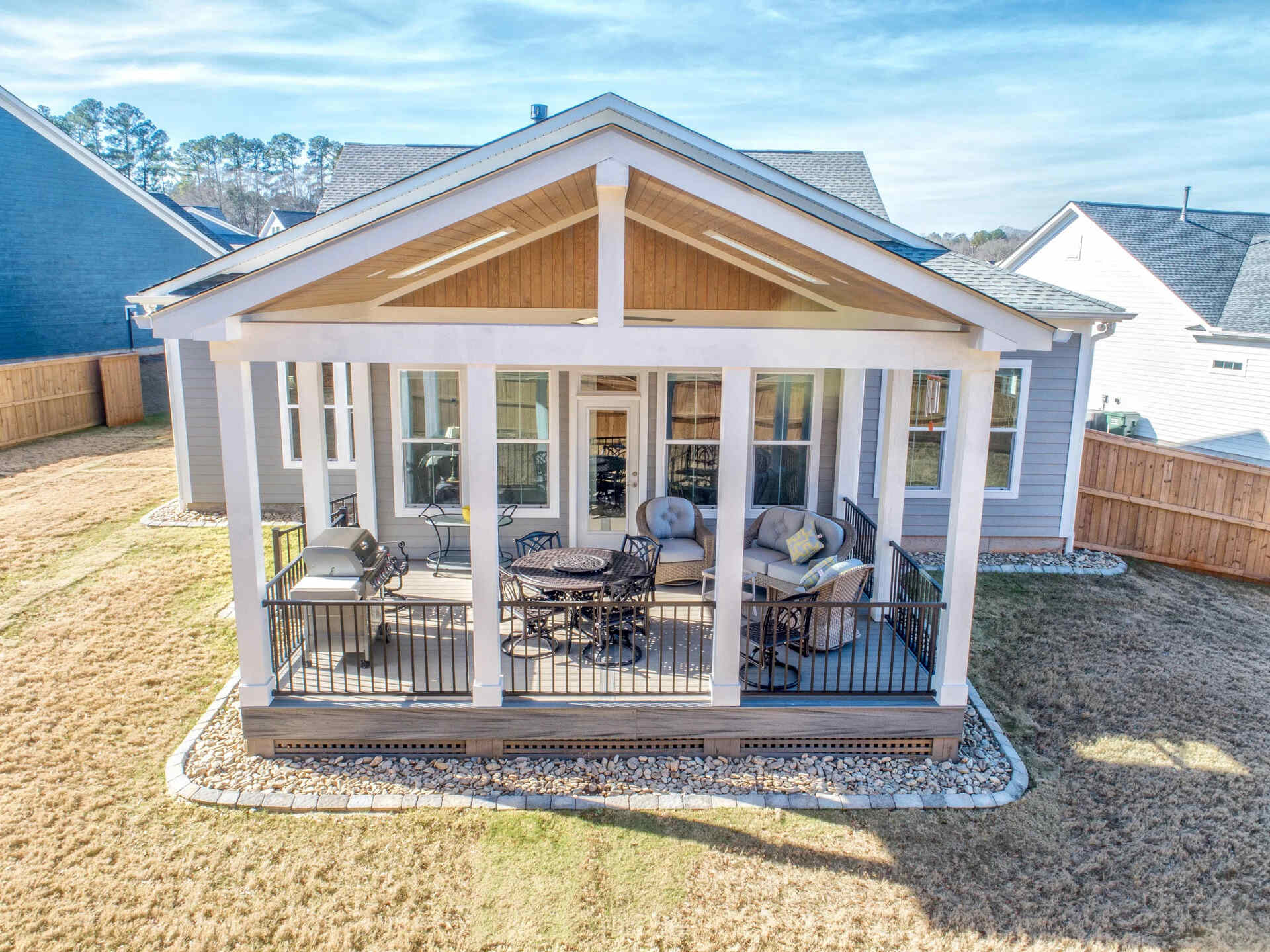

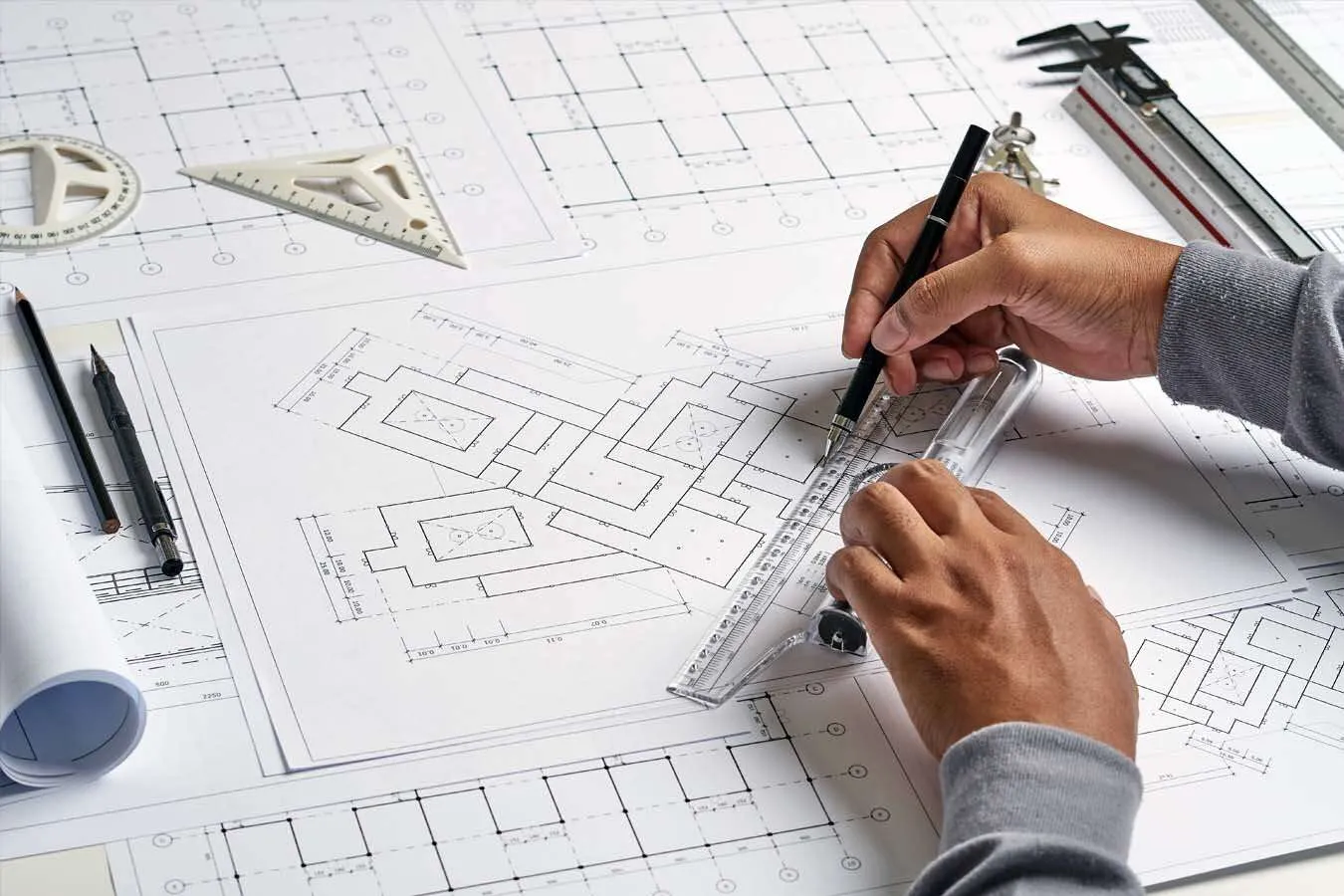
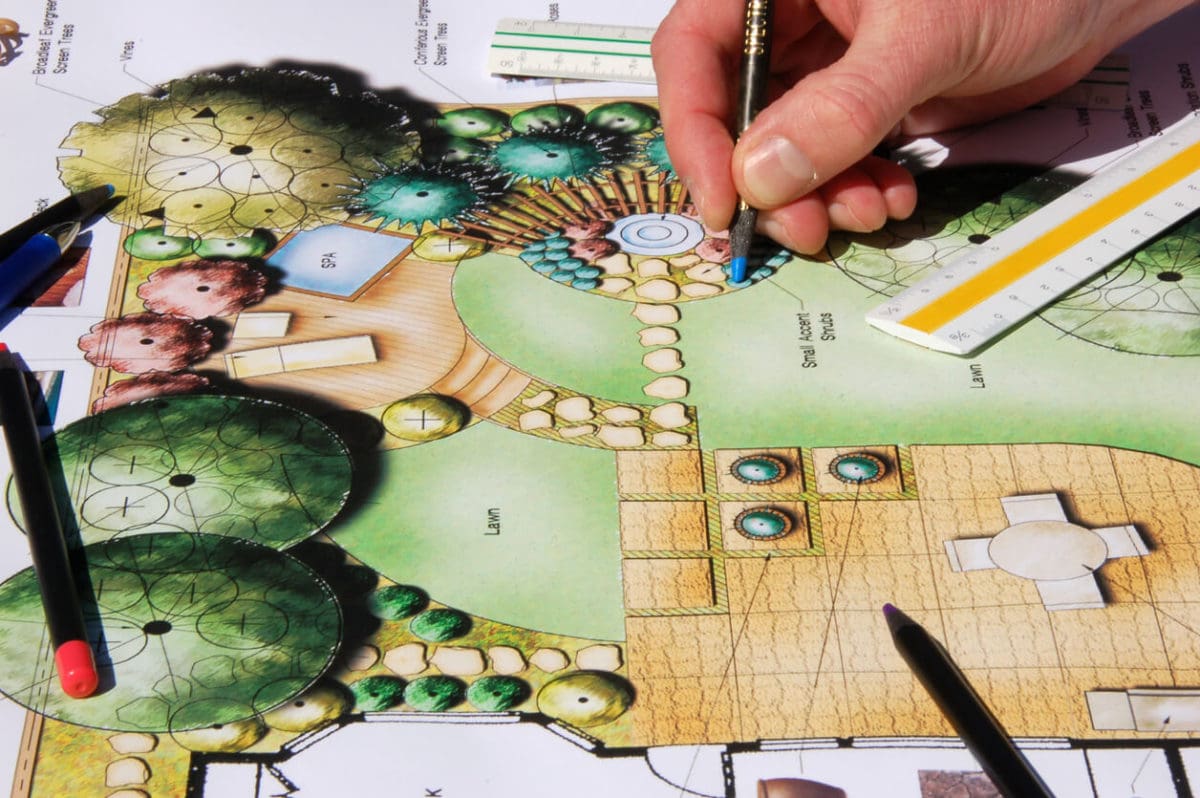
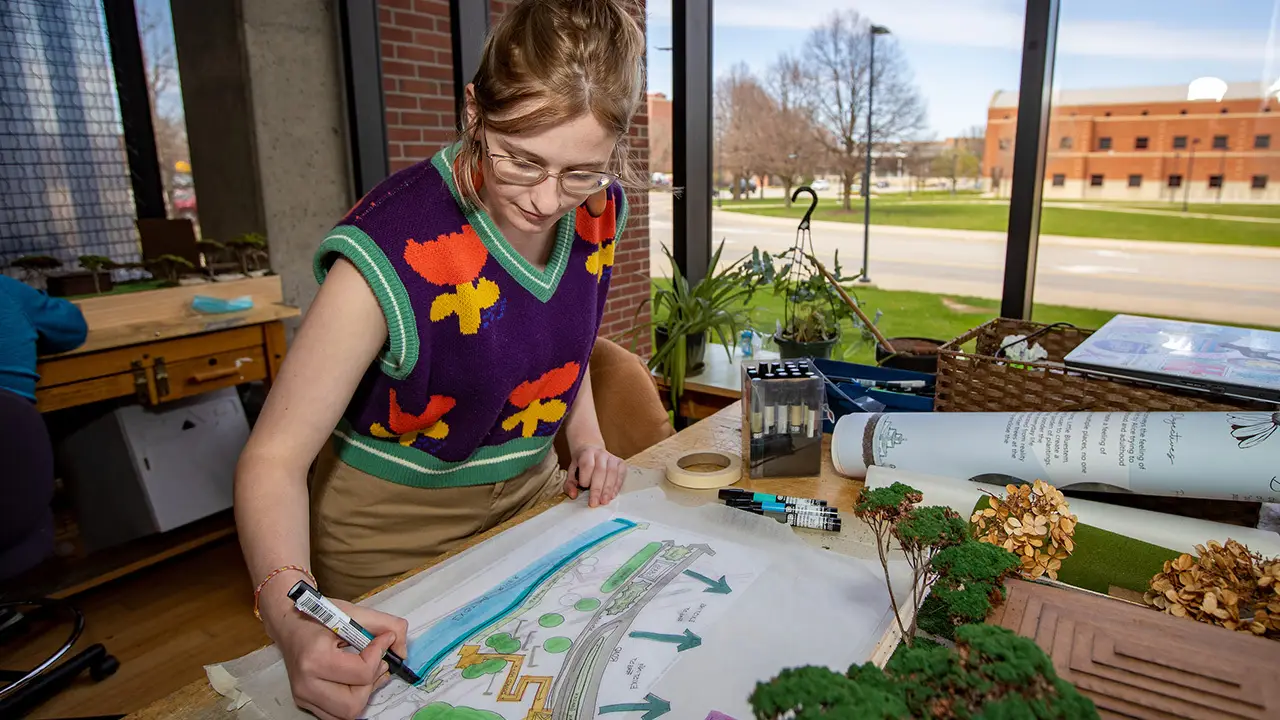


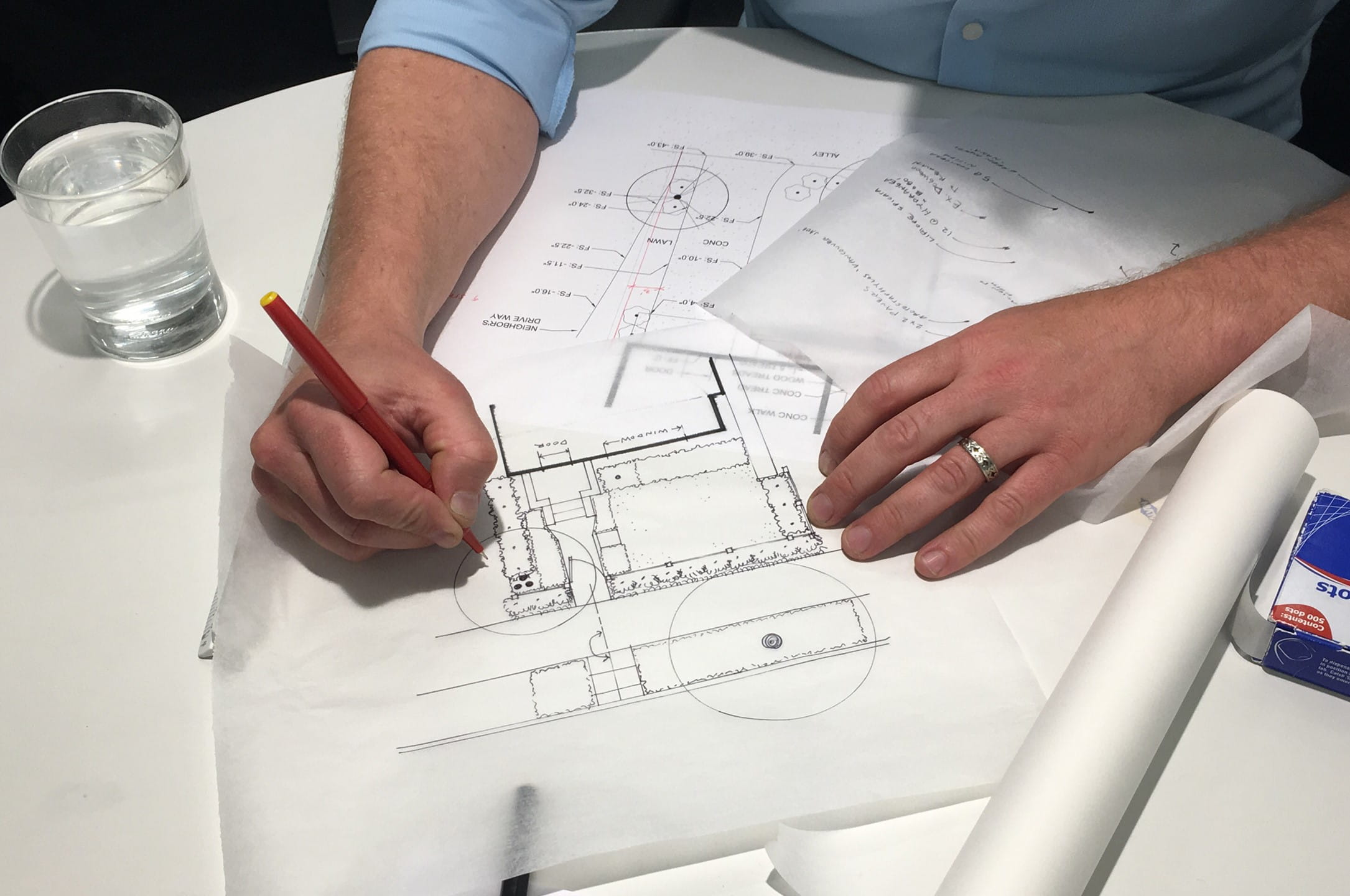
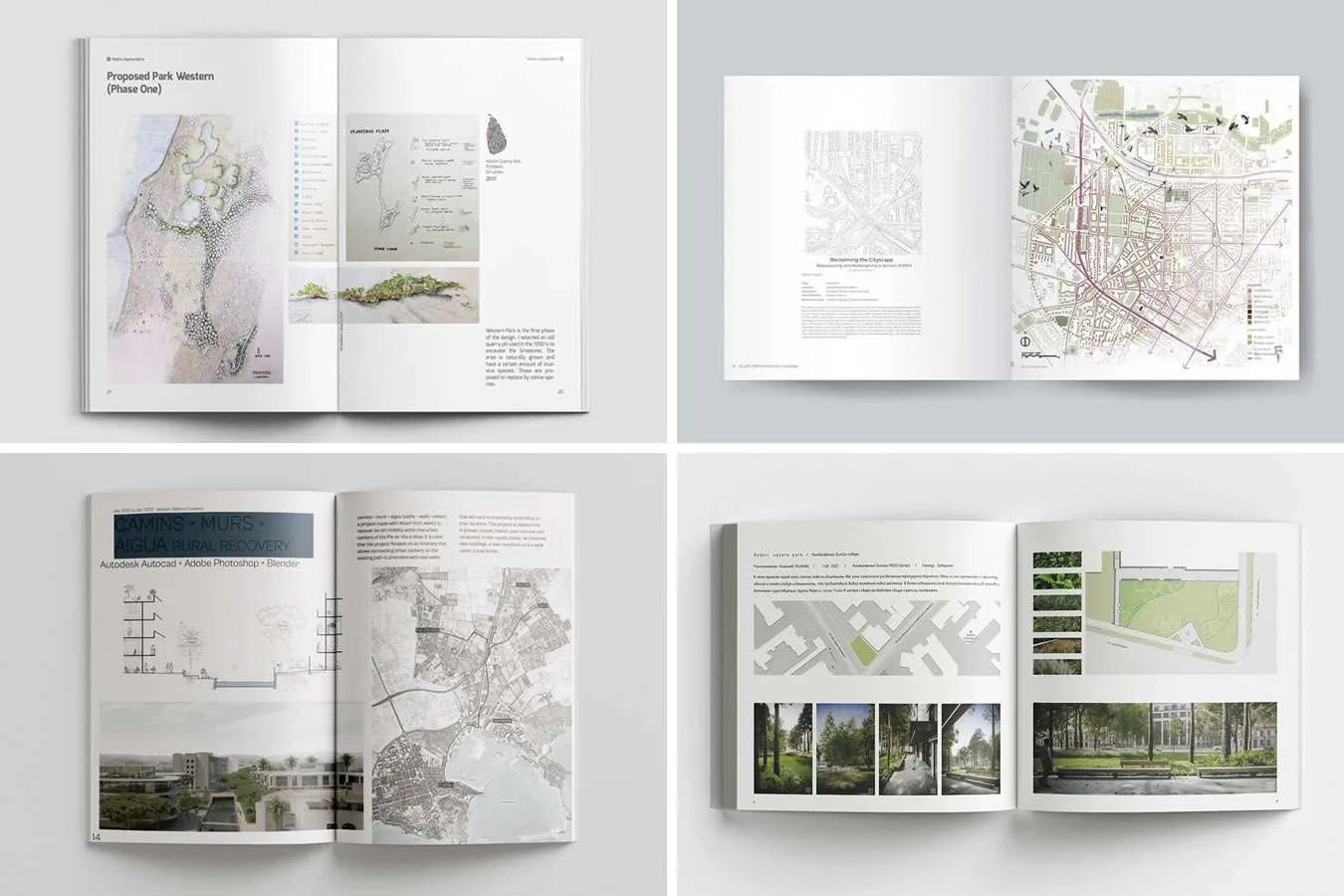





0 thoughts on “How Does Architect Relate To Design A House”